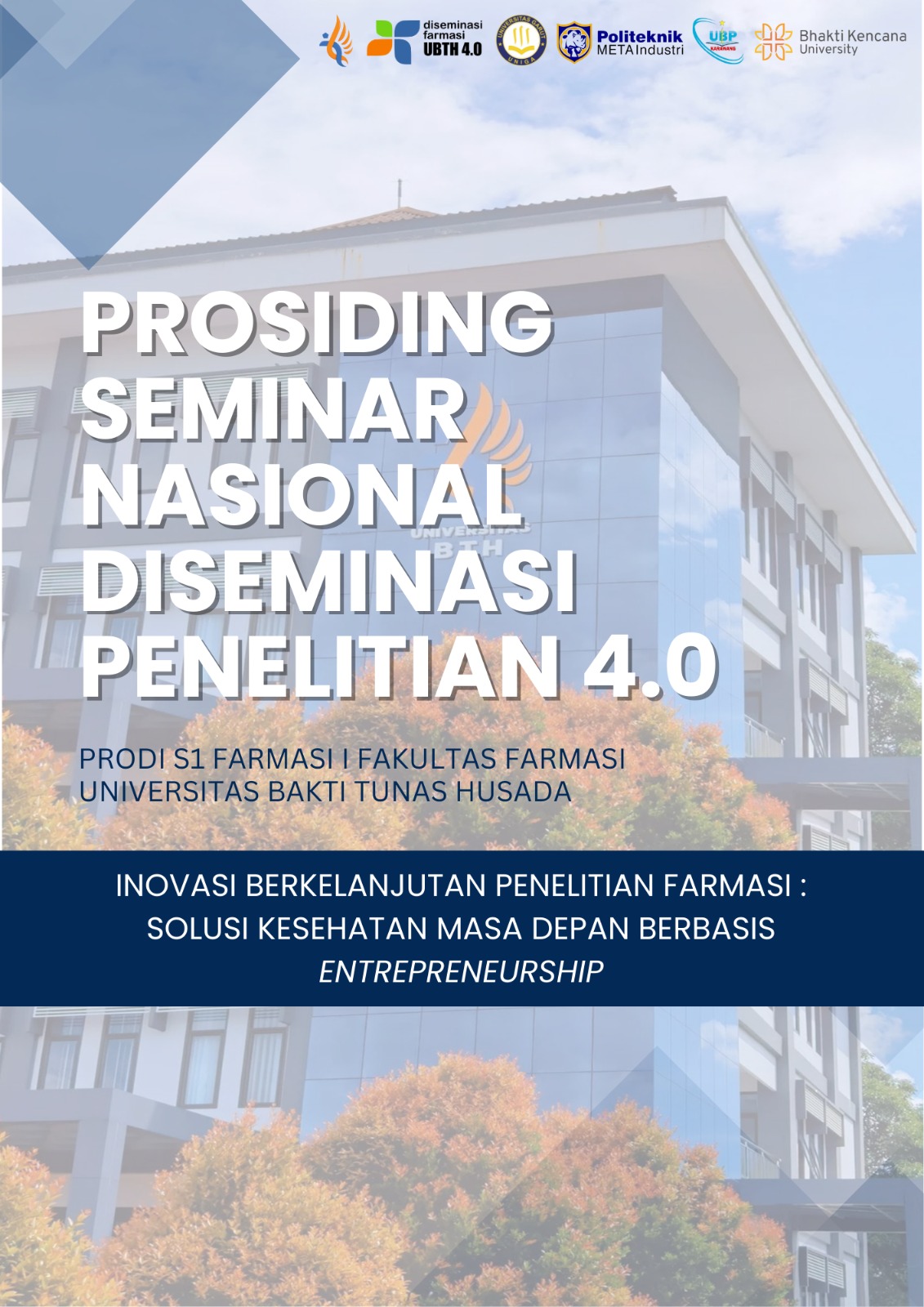Karakterisasi Mutu Simplisia dan Uji Aktivitas Antibakteri Ekstrak Etanol Ranting Jengkol (Archidendron pauciflorum) Terhadap Bakteri Streptococcus mutans Penyebab Karies Gigi
Keywords:
characterization, antibacterial activity test, jengkol twigsAbstract
Introduction: Tooth decay or cavities are a frequent dental health problem found among the public
which is formed due to the accumulation of dirt or food waste which is formed due to the activity of the bacteria Streptococcus mutans. Indonesia has many types of plants that have antibacterial potential, one of which is jengkol. According to empirical data, jengkol twigs can overcome dental problems caused by bacterial microorganisms. Objective: To determine the quality characteristics of simplicia and the antibacterial activity of ethanol extract of jengkol (Archidendron pauciflorum) twigs on Streptococcus mutans bacteria. Method: This research is experimental with extraction, checking the quality characteristics of simplicia, and testing antibacterial activity. Result: Simplicia jengkol twigs, in testing the ethanol soluble essence content resulted in 25.5 ± 0.2, water soluble essence content 18.31 ± 0.16, drying loss 3.68 ± 0.015, water content 6 ± 1, total ash content 2, 19 ± 0.08%, acid insoluble
ash content 1.54 ± 0.80%, specific gravity 1.04 g/mL and positive for saponin; polyphenols; steroids;
triterpenoids. In the antibacterial activity test, a 50% concentration produced an average inhibition zone of 17.96%, a 40% concentration of 16.5 mm, a 30% concentration of 15.6 mm, 20% concentration of 15 mm, a 10% concentration of 12 mm, a positive control of 18,4 mm, negative control 7 mm.
Conclusion: A concentration of 50% extract was proven to be effective in inhibiting the activity of
Streptococcus mutans bacteria, comparable to the positive control clindamycin
References
Handayani, F., Apriliana, A., & Natalia, H. (2019). Karakterisasi Dan Skrining Ftokimia Simplisia Daun Selutui Puka (Tabernaemontana macracarpa Jack). Jurnal Ilmiah Ibnu Sina, 4(1), 49–58.
Iskandar, B., Lukman, A., Tartilla, R., Dwi Condro Surboyo, M., & Leny, L. (2021). Formulasi, Karakterisasi Dan Uji Stabilitas Mikroemulsi Minyak Nilam (Pogostemon cablin Benth.). Jurnal Ilmiah Ibnu Sina :Ilmu Farmasi Dan Kesehatan, 6(2), 282–291.
https://doi.org/10.36387/jiis.v6i2.724
Rahmida, P., Darasono, V., & Noval. (2023). Uji Aktivitas Ekstrak Bunga Pinang (Areca cetechu L.) TERHADAP Streptococcus mutans Penyebab Karies Gigi. In Sains Medisina (Vol. 1, Issue 4).
Sulistyowati, E. W., & Sukardiman. (2022). Aktivitas Antibakteri Ekstrak Daun Sirih (Piper betle L) dengan Penambahan Etanol 96%. Jurnal Ilmiah Farmasi, 18(2), 123–130.
Theressia, M., & Mulyadi. (2022). Teknologi Pengolahan Buah Jengkol Dan Pemasaran Bagi Masyarakat Di Desa Sido Makmur Kecamatan Sipora Utara Kabupaten Kepulauan Mentawai. In Jurnal Hilirisasi IPTEKS (Vol. 5, Issue 3).
Vonna, A., Desiyana, S. L., Hafsyari, R., & Illian, N. D. (2021). Analisis Fitokimia dan Karakterisasi dari Ekstrak Etanol
Daun Kersen (Muntingia calabura L.). Jurnal Bioleuser, 5(1), 8–12.
Wahyuni, D., Mawardika, H., Riski, W. A., & Pitaloka, S. A. (2023). Karakterisasi Makroskopis Dan Mikroskopis Jeruk
Purut (Citrus hystrix DC) Sebagai Bahan Alam Berkhasisat Obat. JUSTER : Jurnal Sains Dan Terapan, 2(2), 1–7.
https://doi.org/10.57218/juster.v2i2.5 87
Yuliana Saputri, V., Nour Sholichah, R., Solichah, L., Ainun Najah, M., Su, M., & Kunci, K. (2020). Translokasi asimilat pada Anggrek Akar. Jurnal Penelitian Sains, 22(1), 1–8. https://doi.org/10.26554/jps.v22i1.553

